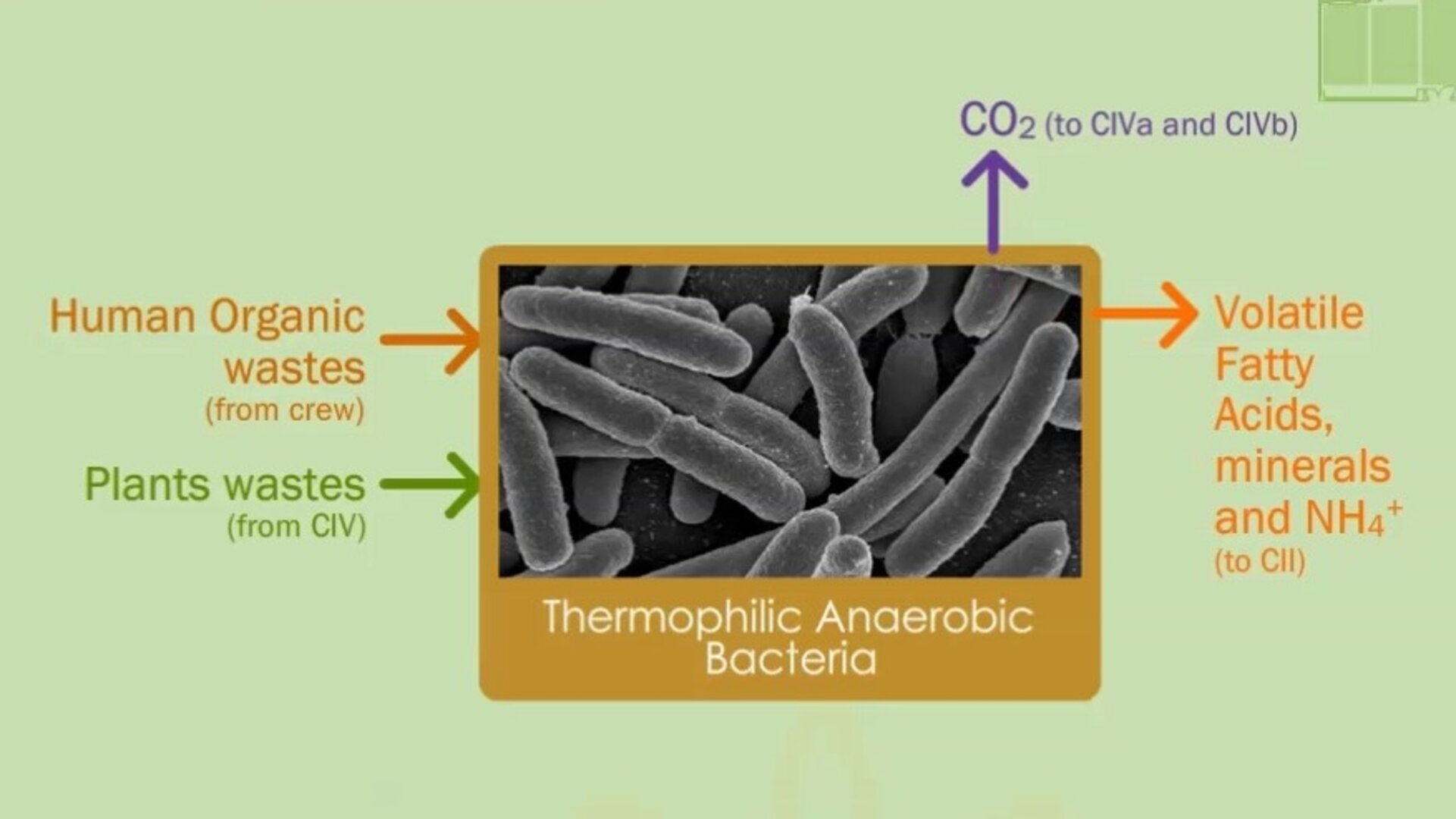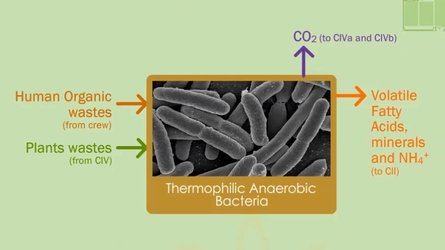Compartment I: The liquefying compartment
This compartment is the gathering pool for the organic waste collected during mission i.e. food waste, urine, paper, the nonedible output of the higher plant compartment (straw, roots...) and the non-edible microbial biomass. Its essential task is to anaerobically transform this waste to ammonium, CO2, volatile fatty acids and minerals. For biosafety reasons, as well as degradation efficiency, the compartment operates in thermophilic conditions (i.e. 55°C). In terms of degradation, three main functions are expected in this compartment:
| Proteolysis | intra- and extracellular protein degradation by enzymes |
| Saccharolysis | breakdown of saccharides |
| Cellulolysis | decomposition of cellulose into polysaccharides |


Access the video
During the early years of MELiSSA, it was expected that a proper selection of a restricted number of mesophilic (living in moderate temperatures) bacteria could reach a reasonable level of degradation. However, despite interesting results, among them the identification of a new proteoloytic bacteria (i.e. Protelyticus thermocellum), a percentage of degradation higher than 15% has never been obtained. Therefore it was decided to extend the number of bacteria and to work with a consortium of autochthonous strains.
Now, the overall biodegradation efficiency by the selected inoculum allows the reaching reasonable values (i.e. proteolysis 70%, fibre 44%). Better degradation values are currently limited by two factors: the slow degradation of fibrous material (i.e. cellulose, xylan, lignin) and the mechanical difficulty of extracting these non-degraded compounds for a specific and more adapted treatment. To improve this degradation level, several technologies are studied (nearcritical oxidation, fungi, rumen bacteria, mesophilic anaerobic and hyperthermophilic bacteria…).







